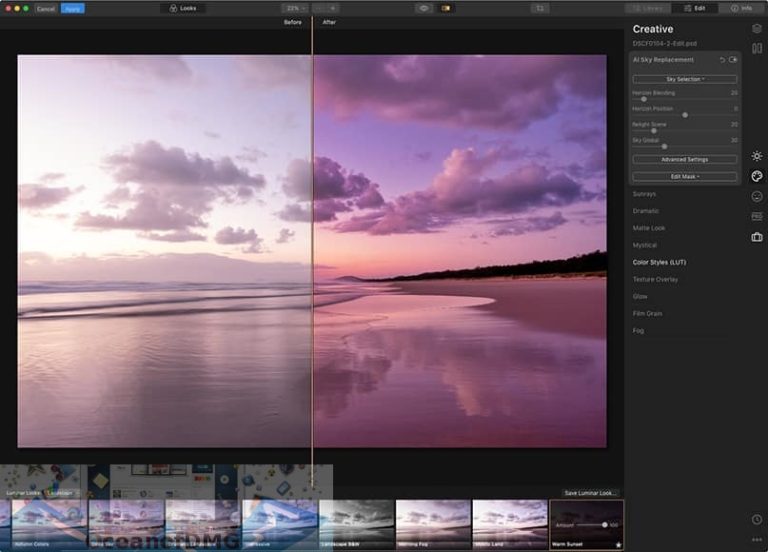
With Bokeh being a desirable quality of every portrait, this tool will be a game-changer for amateur portrait photographers. Of all the new tools of Luminar AI, I am the most excited about Bokeh AI. Bokeh AI (coming soon)Īs the name suggests, Bokeh AI will be capable of producing beautiful bokeh. Although not all that useful, you can change iris colour or even swap it for owl or cat eyes. Not only can you improve iris visibility and shine, but also its appearance. Iris AI takes this to a whole another level. In Luminar 4, we saw the Eye Enhancer tool that added some sparks to eyes. However, I believe that this tool will be a welcome addition to selfies and portraits. I, for one, dislike changing body shapes. Body AIīody AI is a brand-new tool that changes the shape of bodies. Thus, it’s capable of applying fog behind foreground elements, such as trees. Furthermore, you get control over amount, lightness, and depth.Īdditionally, thanks to an AI this tool can recognize the depth of objects in photos. Using these tools, you can add fog, layered fog, mist, and haze to your images. Atmosphere AIĪtmosphereAI resembles Fog tools from Luminar 4, but considering how much it was changed, it is only fair to mark it as new. Especially beginners often struggle to decide whether they want a square or 4×5 or 16×9 photo. Then, it crops the photo based on its algorithm that usually follows the rule of thirds.Īlthough it’s an interesting tool, I’d love to see it also have an option to automatically choose the aspect ratio. First, it uses AI to analyze the contents of a photo. New tools Composition AIĬomposition AI is a brand-new tool that automatically crops your photo. I will only provide a short description of the new tools because I’ve already described them in-depth in my Luminar AI review. Especially image loading.īy upgrading from Luminar 4 to Luminar AI, you’ll receive several new and upgraded tools.įirst, I’ll list all the new tools, and then the updated ones. However, Catalog from Luminar AI seems to be working a lot faster than Library. And there’s no significant difference in their usability. What was called Library in Luminar 4 is called Catalog in Luminar AI. Luminar 4, on the other hand, still uses Looks, which are traditional presets. Luminar AI, on the one hand, is based around these “smart” presets that automatically suggest the best edits for your photos. The main difference between Luminar AI and Luminar 4 are Templates.



Luminar AI introduced a new concept to the photo-editing community – Templates, the fully automated presets.īeing an avid user of Luminar 4 and a beta tester of Luminar AI, I hereby present facts and my thoughts about Luminar AI vs Luminar 4. What first appeared to be a Luminar 4 upgrade, turned out to be a brand-new, AI-powered photo editing app. It was released on December 15 of the same year. Then, in late 2020, Skylum announced Luminar AI. What would otherwise be a tedious job in Photoshop, Luminar 4 was capable of doing by dragging a few sliders. Portrait tools and Sky Replacement in particular introduced the biggest changes. It was capable of producing professional-looking results even in the hand of a beginner.
#Download luminar 4 software
Luminar 4, released in 2018, was the first post-processing software by Skylum that was widely accepted by the crowd.


 0 kommentar(er)
0 kommentar(er)
